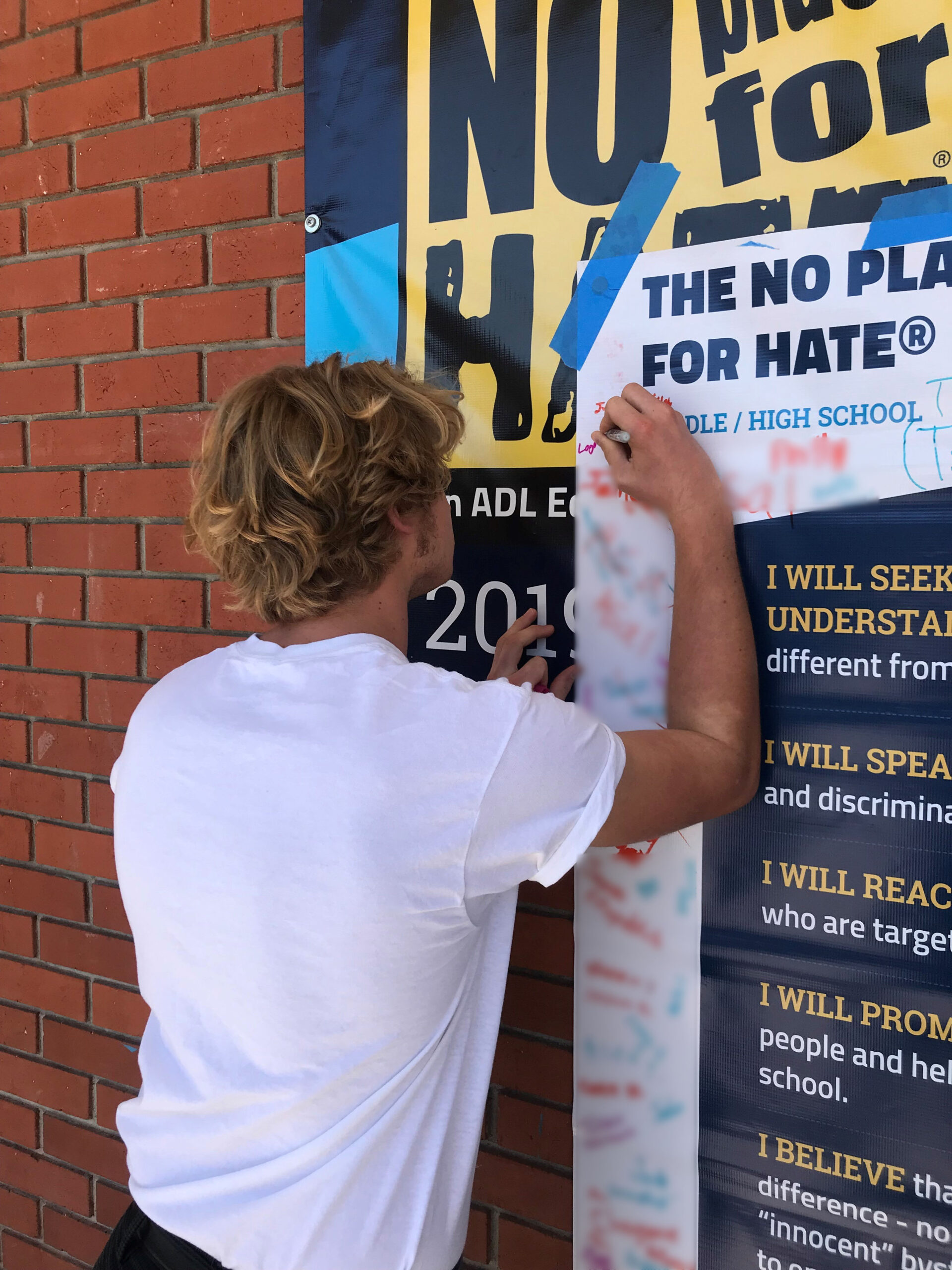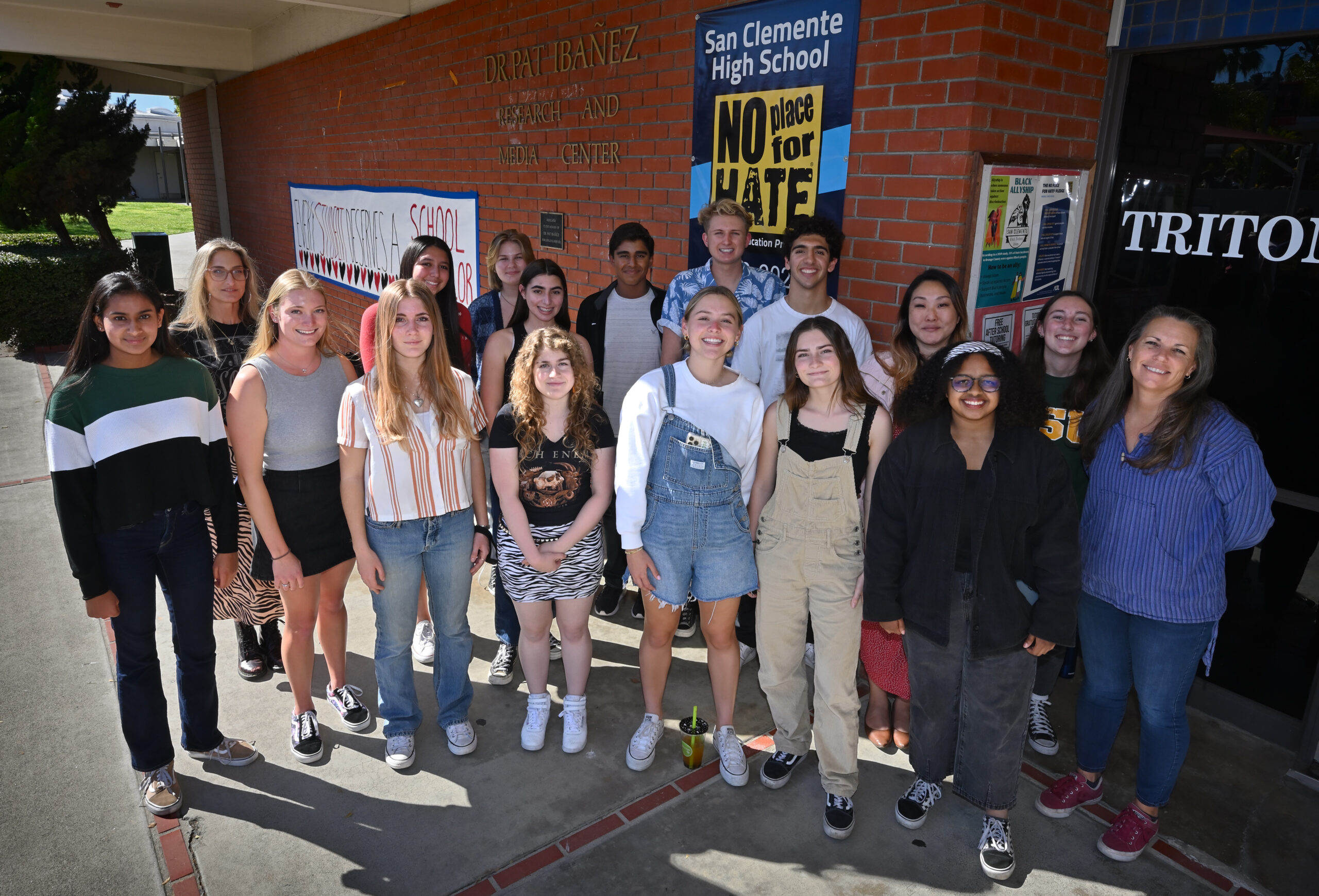By Elysse James
Diversity and culture are being celebrated in Capistrano Unified.
School staff, students, and families are sharing their cultures, their stories, and their histories with the CUSD community. It’s all about students and supporting students, said Stacy Yogi, Executive Director of State and Federal Programs for Capistrano Unified.
“When you know people’s stories and develop empathy, you’re more open to embracing differences,” said Cuco Gracian, Executive Director of Cultural Proficiency, Equity, Access, and Social Emotional Learning at Capistrano Unified. “It’s the first step of bringing people together.”
For about 5 years, Yogi said, Capistrano Unified has been discussing equity, access, gaps, and diversity, and how they can increase access and learning outcomes for all students.
“This is work that’s ongoing with everybody involved,” Yogi said. “It’s really exciting that this work spans across the entire district.”
This year, the District is implementing its Cultural Proficiency Plan, which was adopted by the Capistrano Unified Board of Trustees in December 2020, Gracian said, with a goal to create positive systemic change for all students and establishes an inclusive environment where the community values diversity.
Some of the goals and strategies in the plan include:
- Ensure students have access to support and feel connected to school
- Examine and improve discipline practices policies through a cultural proficiency lens and educate adults on those practices
- Increase student voice and students’ cultural proficiency
- Hire, support and retain an increasingly diverse staff representative of the student demographics
“Capistrano Unified School District is committed to equality, diversity, inclusion, acceptance and human and civil rights for all,” said Supt. Kirsten Vital Brulte. “We are proud of the diversity in our schools and communities and we are committed to ensuring that all students have access to all of the wonderful programs, classes, and opportunities that are offered in our District.”
A group effort
It was no easy task creating a flexible, comprehensive plan for the entire District, but Capistrano Unified’s Cultural Proficiency Task Force was determined.
“To see how people have embraced this work speaks to the core values of Capistrano Unified,” Gracian said.
Beginning in the fall of 2019, the Task Force took the opportunity to examine the data and delve into the District’s Policies and Procedures to find ways to increase outcomes for all students, Yogi said. The Task Force composed of teachers, students, school counselors, administrators, district office staff, and parents, was a committee of over 50 people who worked on the development of the plan, Yogi said.
“It was definitely a group effort, a collaborative effort, among all those partners to come up with the plan,” Yogi said.
In the end, the Task Force presented a plan — adopted by the school board in December 2020 — that allows for creativity and flexibility so that all campuses can identify areas ripe for improvement and create change that benefits all students.

Photo provided by Sarah Kang
A flexible approach
Now, Capistrano Unified is seeing the benefits: elementary schools are creating unity quilts that represent aspects of the students’ cultural traditions in quilt form; secondary schools are focusing on Latino Heritage Month, Native American Heritage Month, and more; schools are sharing cultural stories with the school community; working with the Anti-Defamation League; creating their own equity clubs; and the District Office is working to create robust translation and interpretation services. Currently, Capistrano Unified has employees who speak multiple languages, including English, Spanish, Farsi and Mandarin.
“We are working to reach every family in our District and increase communication in their preferred home language,” said Ryan Burris, Chief Communications and Public Engagement Officer for Capistrano Unified. “It’s important for us to build these relationships so we can help support our students at home and at school.”
The District is piloting a program for schools in Mission Viejo called Talking Points that will provide translation in more than 100 languages, Yogi said. A teacher, for example, could text parents in English and a family that has selected Russian would receive the message translated into that language. The parent could text a response to the teacher in Russian and the teacher would receive it in English. In Mission Viejo alone, Yogi said, parents speak more than 35 languages.
“We’re seeing more mindful and purposeful approaches,” Gracian said, “which goes back to the school’s goals.”
The school sites aren’t doing this alone — the District is offering anti-bias training and equity access training for all employees to help them build their knowledge of cultural proficiency and identify where change is most needed, according to Gracian.
“Now that I’m here seeing it happening, it’s amazing,” Gracian said, giving credit to the school board, District leadership, school leaders, teachers, students and families that have embraced the plan. “They’re seeing the bigger picture, which is that all students have access to everything in Capistrano Unified.”
Community-led change
School administrators are excited about the possibilities. They have embraced the plan, setting data-based goals that include reviewing hiring and recruitment practices, looking at student suspension rates, student access to International Baccalaureate (IB) and Advanced Placement (AP) classes, reducing chronic absenteeism, decreasing bullying, and more.
“Each community has a different understanding of where they are,” Gracian said.
At San Clemente High School, the entire staff attended training held by the Anti-Defamation League, said Principal Chris Carter. Following the training, the campus adopted a program called No Place for Hate, sponsored by the Anti-Defamation League and run by San Clemente High teachers Sarah Kang and Michelle Brislen.
“Our kids have a broader understanding of the impact words and actions have on their peers,” Carter said. “I see a broader range of acceptance on our campus, with a variety of different student groups being able to express themselves.”
The coalition of students, teachers, staff members, and administrators work collaboratively to bring awareness and focus on inclusion and support of all students, Carter said. The group organizes three schoolwide events each year, meets monthly, and attends a five-day training each summer where they learn and brainstorm activities for the school.
“It’s designed to build awareness among our entire community and staff to make sure students feel included,” Carter said.
No Place for Hate events at San Clemente High so far have included an annual pledge students are encouraged to sign, a December activity educating students on “allyship” and being an upstander, creating posters to place around campus, and filming testimonial videos. In the video, members of the No Place for Hate coalition read testimonials from students who had experienced a negative act on the San Clemente High campus. Afterward, students discussed the testimonials and reviewed the cultural proficiency continuum.
“The program has been outstanding,” Carter said. “It’s been so rewarding to work with such a forward-thinking group of young people. The students on the No Place for Hate coalition are incredibly thoughtful, supportive, worldly. To hear their comments and their ideas is absolutely amazing. That’s probably the most rewarding piece. And to see the incredible activities they do that I believe really bring awareness to the whole school.”
Gracian has been pleasantly surprised by the way principals and teachers have embraced this challenge and incorporated new ideas, he said. It can be difficult to look at data and see that not all students are successful or supported, Gracian said, and to ask how we as a District can come up with ways to make sure that “all” means “all”.
“It’s not easy work to be self-reflective,” Gracian said. “It really makes me proud to see that we as a district are self-reflective.”
The Task Force will now continue working with school sites on implementing the plan and reaching school site goals, and will provide quarterly progress reports to the Capistrano Unified Board of Trustees.
“I’m proud to do this work,” Gracian said. “It brings me a lot of pride… We all want to help all students. This is really trailblazing.”

